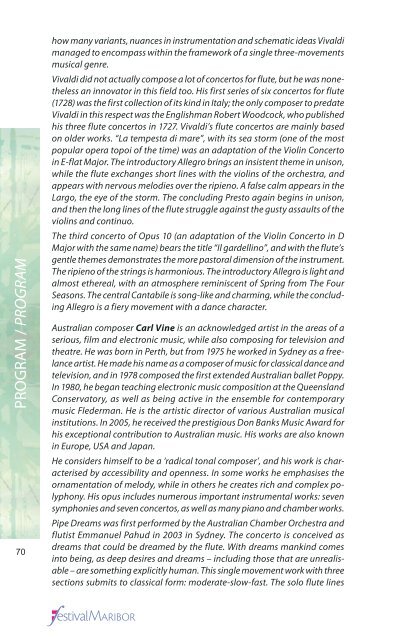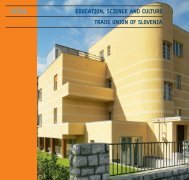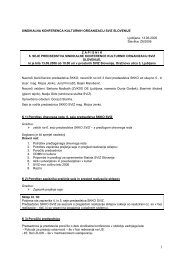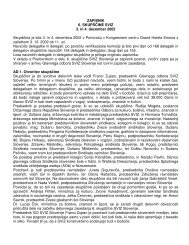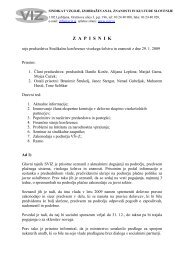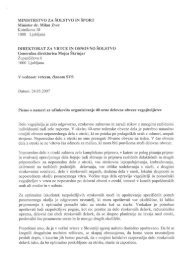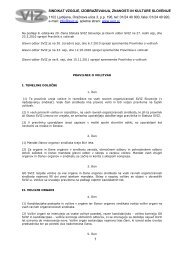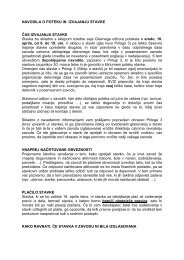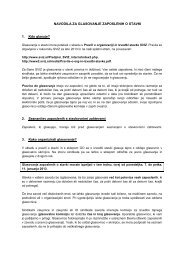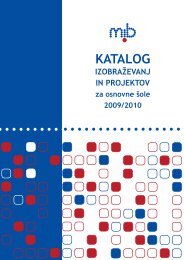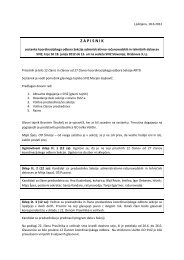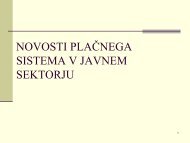You also want an ePaper? Increase the reach of your titles
YUMPU automatically turns print PDFs into web optimized ePapers that Google loves.
PROGRAM / PROGRAM<br />
70<br />
how many variants, nuances in instrumentation and schematic ideas Vivaldi<br />
managed to encompass within the framework of a single three-movements<br />
musical genre.<br />
Vivaldi did not actually compose a lot of concertos for flute, but he was nonetheless<br />
an innovator in this field too. His first series of six concertos for flute<br />
(1728) was the first collection of its kind in Italy; the only composer to predate<br />
Vivaldi in this respect was the Englishman Robert Woodcock, who published<br />
his three flute concertos in 1727. Vivaldi’s flute concertos are mainly based<br />
on older works. “La tempesta di mare”, with its sea storm (one of the most<br />
popular opera topoi of the time) was an adaptation of the Violin Concerto<br />
in E-flat Major. The introductory Allegro brings an insistent theme in unison,<br />
while the flute exchanges short lines with the violins of the orchestra, and<br />
appears with nervous melodies over the ripieno. A false calm appears in the<br />
Largo, the eye of the storm. The concluding Presto again begins in unison,<br />
and then the long lines of the flute struggle against the gusty assaults of the<br />
violins and continuo.<br />
The third concerto of Opus 10 (an adaptation of the Violin Concerto in D<br />
Major with the same name) bears the title “Il gardellino”, and with the flute’s<br />
gentle themes demonstrates the more pastoral dimension of the instrument.<br />
The ripieno of the strings is harmonious. The introductory Allegro is light and<br />
almost ethereal, with an atmosphere reminiscent of Spring from The Four<br />
Seasons. The central Cantabile is song-like and charming, while the concluding<br />
Allegro is a fiery movement with a dance character.<br />
Australian composer Carl Vine is an acknowledged artist in the areas of a<br />
serious, film and electronic music, while also composing for television and<br />
theatre. He was born in Perth, but from 1975 he worked in Sydney as a freelance<br />
artist. He made his name as a composer of music for classical dance and<br />
television, and in 1978 composed the first extended Australian ballet Poppy.<br />
In 1980, he began teaching electronic music composition at the Queensland<br />
Conservatory, as well as being active in the ensemble for contemporary<br />
music Flederman. He is the artistic director of various Australian musical<br />
institutions. In 2005, he received the prestigious Don Banks Music Award for<br />
his exceptional contribution to Australian music. His works are also known<br />
in Europe, USA and Japan.<br />
He considers himself to be a ‘radical tonal composer’, and his work is characterised<br />
by accessibility and openness. In some works he emphasises the<br />
ornamentation of melody, while in others he creates rich and complex polyphony.<br />
His opus includes numerous important instrumental works: seven<br />
symphonies and seven concertos, as well as many piano and chamber works.<br />
Pipe Dreams was first performed by the Australian Chamber Orchestra and<br />
flutist Emmanuel Pahud in 2003 in Sydney. The concerto is conceived as<br />
dreams that could be dreamed by the flute. With dreams mankind comes<br />
into being, as deep desires and dreams – including those that are unrealisable<br />
– are something explicitly human. This single movement work with three<br />
sections submits to classical form: moderate-slow-fast. The solo flute lines


